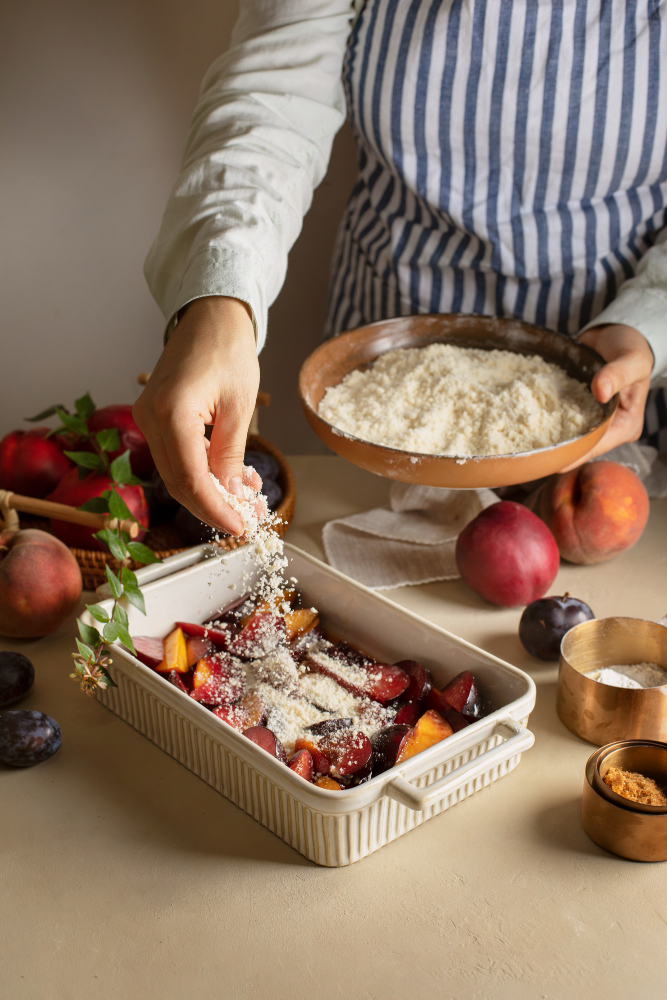When you take cookies or a cake out of the oven, they’re still golden and smell great. The process of baking at home can be fun and interesting. It makes you happy and keeps your kitchen warm. We all know that plans don’t always work out, and sometimes you may wonder, “What went wrong?!”
Don’t worry, people who want to learn how to make pastries! These tips will help you make great baked goods every time, no matter how much you know about it or how little. Get ready for home-baked treats that will make everyone happy.
1. Read the Recipe
Even though it seems obvious, this is the mistake that most people make. Before you even touch a measuring cup, read the whole recipe. This helps you:
- Learn how the process works.
- Get any unique tools you might need.
- Make sure you have everything you need.
- Do not let shocks happen in the middle!
2. Temperature Matters
Temperature is very important in baking.
- Items That Should Be at Room Temperature: Butter, eggs, and cheese should be at room temperature for most recipes. This is not just an idea! When ingredients are at room temperature, they mix together better, making a batter that is smoother and more regular. This batter bakes evenly and has a lighter texture. A good thirty to an hour before you start, take them out of the fridge.
- Warm up your oven: Always, always get the oven ready. After that, give it some more time. Ovens need time to get to the right temperature and stay there. Many oven thermostats aren’t completely exact, so getting an oven thermometer can make all the difference. If you properly heat your oven, your baked goods will rise correctly and cook evenly from the start.
3. Measure Accurately
For people who are new to baking, this may be the most important tip. It’s okay to add a little more salt when cooking, but you have to be very careful when baking.
- Get a cooking scale: For dry things like flour and sugar, it’s best to use a kitchen scale. For flour, which can pack down in different ways, it works much better than measuring cups.
- How to Get Right Level: To measure dry ingredients in a cup, use a spoon to put the ingredient in and then a straight edge, like the back of a knife, to level it off. To keep the item from getting too small, don’t take it out of the bag and use a scoop.
- Get your eyes level: Spread out the cups and look at them straight on to read the writing on them.
4. Quality Ingredients, Quality Results
As with any tasty home-cooked meal, the finished result is only as good as the parts that went into it. Make sure you get your hands on fresh, good ingredients like eggs, butter, and the right kind of flour for your recipe. This changes the taste and appearance in a clear way.
5. Don’t Overmix
This is a common pitfall. Just until they are mixed in, add the dry ingredients to the wet ones. When you mix flour too much, gluten forms in it. This makes baked goods tough, chewy, or dense (think hockey puck cookies instead of soft ones!). It’s okay if there are a few flour spots; they will go away when the food is baked.
6. Prepare Your Pans Properly
Make sure your pans are ready by flouring and greasing them, covering them with parchment paper, or using a silicone mat. This keeps things from sticking and makes sure your lovely creation comes out easily and whole.
7. Resist the Urge to Peek
If you open the oven door a lot, especially in the first two-thirds of the baking time, the temperature can drop a lot, which can cause cakes or soufflés to sink or lose their shape. Believe in the timer and your oven. You should only take a look when the baking time is almost up or when the recipe says to.
8. Master the “Done” Test
Knowing when your baked good is perfectly done comes with practice.
- Cakes/Muffins: A toothpick inserted into the center comes out clean.
- Cookies: Edges are golden, centers might still look slightly soft.
- Breads: Tapping the bottom sounds hollow.
9. Cool Down Properly
Most baked goods need to cool in their pans for a short period (usually 5-10 minutes) before being transferred to a wire rack to cool completely. Cooling on a wire rack allows air circulation, preventing soggy bottoms. Resist the urge to cut into warm cakes unless the recipe specifies it – they often continue to set as they cool.
10. Learn from Your “Mistakes”
There will be times when your baking fails, but that’s okay! Every “failed” try is a chance to learn something. Did the cookies get too big? The butter might have been too warm. Was the cake not moist? It might have been too hot. Write down what went wrong and fix it next time. The fun is in the trip and finding something tasty.
Now that you know these baking tips, you can make delicious treats at home that will wow your family and friends. Have fun baking!
